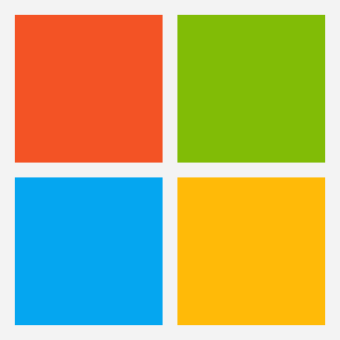Best Collaboration Software
What is Collaboration Software?
Collaboration Software is designed to enhance teamwork and streamline communication within organizations. These platforms enable employees to work together efficiently, regardless of their location, by providing tools for real-time messaging, file sharing, project management, and document collaboration. With features like task tracking, group chat, and video conferencing, collaboration software breaks down the barriers of traditional office settings, promoting seamless collaboration across teams and departments. By centralizing communication and project workflows, businesses can improve productivity, reduce misunderstandings, and ensure that team members stay aligned and on track toward common goals. These tools are essential for remote and hybrid work environments.
29 Listings in Collaboration Software
More About Collaboration Software
Collaboration Software is an essential tool for businesses in today’s fast-paced, interconnected world. As the workplace becomes increasingly digital and distributed, collaboration software has emerged as a vital resource to enhance communication, streamline workflows, and foster a culture of teamwork. Whether in-office, remote, or hybrid, collaboration tools are designed to support individuals and teams by providing real-time communication, project management, document sharing, and a variety of other features that improve overall productivity. In a globalized world where teams are often spread across multiple time zones and locations, the right collaboration software can bridge the gap between people, ensuring they stay connected and work seamlessly together toward common goals.
At its core, collaboration software is about enabling efficient communication and collaboration across various channels. These tools allow team members to stay in touch, share information, and track progress in a unified platform. Whether it’s through direct messaging, group chats, video calls, or project updates, collaboration software ensures that all stakeholders are kept informed and aligned. This is particularly important in modern businesses, where teams may work remotely, from different offices, or in different departments, all of whom need to stay connected to contribute to the organization’s success.
Real-time communication features are one of the most crucial elements of collaboration software. Instant messaging or chat rooms allow employees to quickly exchange ideas, share updates, and ask questions. Group chats enable teams to stay connected on a particular project or task, with conversations organized by topics or teams, while direct messages facilitate one-on-one communication. This ensures that employees don’t need to wait for emails or scheduled meetings to communicate, drastically improving response times and overall efficiency. In addition to chat, video conferencing tools integrated into collaboration platforms enable face-to-face meetings, even when team members are in different locations. Video meetings allow for clearer communication, fostering stronger relationships and ensuring that everyone’s voice is heard, regardless of their location.
Beyond communication, collaboration software also includes features that streamline the management of projects and tasks. Many collaboration platforms come with built-in project management tools that help teams stay organized and on track. These tools allow team leaders and members to create tasks, assign deadlines, and monitor progress. Project management features like task boards, timelines, and Gantt charts provide a visual representation of progress, making it easier for teams to manage complex projects and track deliverables. This allows project managers to have a clear overview of the work, ensuring that tasks are completed on time and goals are met. Moreover, with the ability to set priorities, share resources, and track milestones, collaboration software ensures that teams are working efficiently and not duplicating efforts.
Document sharing and collaborative editing are other crucial aspects of modern collaboration tools. In the traditional office environment, employees could simply walk over to a colleague’s desk to discuss a document or provide feedback. However, in remote or hybrid work environments, sharing and collaborating on documents electronically has become the norm. Collaboration software platforms allow team members to upload, share, and co-edit documents in real time, enabling multiple people to work on the same file simultaneously. This reduces the need for back-and-forth emails, version control issues, and the time-consuming process of merging changes. Additionally, cloud storage integrated into collaboration software ensures that all documents are securely stored and easily accessible by all team members, regardless of their location. Features such as comment threads and trackable edits further improve collaboration, ensuring that teams are on the same page when it comes to project deliverables.
One of the most valuable benefits of collaboration software is the ability to centralize information and resources. In the past, employees might have used a variety of tools and platforms to communicate, manage tasks, and store documents, leading to confusion, lost information, and inefficiencies. Collaboration software eliminates this problem by consolidating everything into one platform, where team members can access all relevant information, tasks, and conversations in a single location. This not only saves time but also improves transparency, as everyone can see what’s happening in real time. With a centralized platform, employees no longer need to search through endless email threads or multiple applications to find the information they need.
For businesses that operate in multiple geographic locations or have remote employees, collaboration software is critical in bridging the physical distance between teams. Whether employees are working from home, in different time zones, or across the globe, collaboration software allows them to connect, share ideas, and work together seamlessly. Features such as file synchronization, cloud-based storage, and mobile accessibility ensure that employees can access their work from anywhere at any time. The flexibility provided by collaboration software allows businesses to tap into talent worldwide, without being limited to a specific geographic region.
Integration with other software tools is another major advantage of collaboration platforms. Most businesses use a range of software applications to manage their operations, such as Customer Relationship Management (CRM), accounting software, marketing tools, and more. To improve efficiency and prevent data silos, many collaboration platforms offer integrations with these tools. This allows employees to access and update relevant information without having to switch between applications, further streamlining workflows. For example, integration with CRM software ensures that sales teams can easily access customer data and communication history, while marketing teams can use project management features to track campaigns and deadlines.
Automation is also a growing trend in collaboration software, helping businesses increase productivity and reduce manual work. With automated workflows, tasks that once required manual intervention can now be completed automatically. For example, when a new task is assigned to a team member, the software can automatically notify them and set reminders to ensure deadlines are met. Automated status updates can keep stakeholders informed without requiring constant updates from team members. This frees up employees from routine administrative tasks, allowing them to focus on more critical work.
The use of analytics and reporting within collaboration software is another key benefit for businesses. With built-in analytics tools, managers can track team performance, monitor project progress, and identify areas for improvement. For instance, collaboration platforms can generate reports on task completion rates, communication patterns, and team collaboration levels. This data helps leaders make informed decisions about team resource allocation, task prioritization, and overall project management. It also provides valuable insights into how teams work together, which can help identify bottlenecks or inefficiencies in workflows.
While collaboration software offers numerous advantages, there are some challenges businesses may face in adopting these tools. One common concern is the learning curve associated with new platforms, as employees must adapt to new tools and interfaces. However, many collaboration software providers offer training resources and support to help users get up to speed quickly. Additionally, businesses must consider the security of the platform, especially when sharing sensitive data and documents. Collaboration platforms that offer end-to-end encryption, secure user authentication, and data compliance are critical in ensuring that information is protected.
The future of collaboration software lies in continuing to innovate and enhance the capabilities of these platforms. Artificial intelligence (AI) and machine learning are already being integrated into some collaboration tools to improve productivity and streamline processes. For example, AI-driven tools can help with task prioritization, auto-generating reports, or even analyzing team communication to provide insights into collaboration patterns. Furthermore, as the demand for remote and hybrid work increases, collaboration software will continue to evolve to meet the needs of diverse teams, offering even more flexibility, security, and advanced features.
In conclusion, collaboration software is a crucial tool for modern businesses that need to improve communication, foster teamwork, and increase productivity. With features like real-time messaging, video conferencing, task management, document sharing, and cloud storage, collaboration software enables employees to work together more effectively and efficiently, regardless of their location. By centralizing information, automating workflows, and integrating with other business tools, these platforms streamline business operations and ensure that teams remain aligned and focused on their objectives. As businesses continue to embrace remote and hybrid work, collaboration software will remain a cornerstone of organizational success, helping businesses stay competitive in an increasingly digital and fast-paced world.
Collaboration Software News and Updates
- The Evolution of Team Building Tools: Latest Trends and Innovations Team Building Tools have taken a significant leap forward in recent times with the introduction of new features and enhancements aimed at improving team collaboration and productivity. One of the key ..
- Brainstorming Tools Software: Latest Trends and Innovations In the fast-paced world of technology, Brainstorming Tools software continues to evolve with the latest trends and innovations. Companies are constantly striving to provide users with cutting-edge fea..
- The Rise of Remote Work Platforms: Latest Trends and Innovations As remote work continues to be the new norm for many businesses around the world, the Remote Work Platforms software category has seen a surge in innovations and advancements. Companies are striving t..
- Real-Time Editing Tools: The Future of Collaborative Work Real-time editing tools are revolutionizing the way teams collaborate and work together on projects. With the rise of remote work and distributed teams, the demand for real-time editing tools has neve..
- The Evolution of Calendar and Scheduling Software: Trends and Updates In the ever-evolving world of Calendar and Scheduling software, there have been significant advancements that are shaping the way users manage their time and organize their tasks. One of the key trend..
- The Evolution of Document Collaboration Software: Trends, Innovations, and Updates Document collaboration software continues to revolutionize the way teams work together, with new trends and innovations constantly emerging in the industry. One major trend that has been gaining tract..
- The New Era of Whiteboard Tools: Latest Trends and Innovations The software industry is constantly evolving, and the Whiteboard Tools sector is no exception. In recent months, we have witnessed a surge in innovation and new trends that are reshaping the way we en..
- The Evolution of File Sharing Software: Latest Trends and Innovations File sharing software continues to evolve rapidly, with the latest trends and innovations transforming the way we collaborate and exchange files. From improved security measures to enhanced user exper..
- Team Messaging Apps Software Updates: The Latest Trends and Innovations Team messaging apps have become essential tools for modern workplaces, enabling seamless communication and collaboration among remote and distributed teams. In recent months, the industry has seen a s..
- The Evolution of Video Conferencing Software: Latest Trends and Innovations With the increased demand for remote communication tools, video conferencing software has seen a significant evolution in recent years. Companies are continuously innovating to meet the needs of a cha..
- Revolutionizing Team Building Tools: Latest Trends and Innovations In the fast-paced world of team building tools, innovation never stops. The latest trends in the industry are revolutionizing the way teams collaborate and communicate. One major development is the in..
- Unlocking Creativity: The Latest Developments in Brainstorming Tools Software In today's fast-paced and competitive business landscape, the ability to foster creativity and innovation is crucial for success. This is where brainstorming tools software comes into play, offering t..
- The Future of Remote Work Platforms: Trends and Innovations As the demand for remote work continues to rise, the software industry is seeing a rapid evolution in remote work platforms. Companies are constantly innovating to provide better solutions for teams t..
- Real-Time Editing Tools: The Future of Collaborative Work Real-Time Editing Tools have become an essential part of modern collaborative work environments, allowing teams to work together seamlessly on projects in real-time. The latest trend in this software ..
- Latest Trends and Innovations in Calendar and Scheduling Software In a rapidly evolving digital world, Calendar and Scheduling software have become essential tools for professionals and organizations to manage their time effectively. The latest trends and innovation..
- The Evolution of Document Collaboration Software: Trends and Innovations in 2022 As we enter 2022, the landscape of document collaboration software continues to evolve rapidly. With remote work becoming the norm, the demand for efficient and secure collaboration tools has never be..
- The Evolution of Whiteboard Tools: Latest Trends and Updates Whiteboard tools have come a long way from basic drawing and annotation functionalities to powerful collaborative platforms reshaping the way teams work and communicate. The latest trends in the indus..
- File Sharing Software: Latest Innovations and Developments In the fast-paced world of file sharing software, staying up to date with the latest innovations and developments is key to ensuring efficiency and security. Recent trends in the industry have shown a..
- The Evolution of Team Messaging Apps: Latest Trends and Updates Team messaging apps have seen significant growth and evolution in recent times, with software developers constantly introducing new features and updates to meet the changing needs of users. One major ..
- The Evolution of Video Conferencing: New Trends and Innovations Video conferencing software has become an essential tool for businesses and individuals around the world, especially in the wake of the COVID-19 pandemic. As the demand for remote communication soluti..
Collaboration Software Categories
- Video Conferencing Video Conferencing tools allow businesses to conduct virtual meetings, webinars, and video calls wit..
- Team Messaging Apps Team Messaging Apps are communication platforms designed to facilitate real-time text messaging with..
- File Sharing File Sharing tools allow teams to store, access, and share documents, images, videos, and other file..
- Whiteboard Tools Whiteboard Tools are digital platforms that allow teams to collaborate on brainstorming sessions, vi..
- Document Collaboration Document Collaboration tools allow multiple users to work on the same document simultaneously, makin..
- Calendar and Scheduling Calendar and Scheduling tools help teams manage their time by providing a centralized platform for s..
- Real-Time Editing Tools Real-Time Editing Tools enable multiple users to collaborate on documents and projects simultaneousl..
- Remote Work Platforms Remote Work Platforms are all-in-one solutions designed to support teams working remotely. These pla..
- Brainstorming Tools Brainstorming Tools are digital platforms designed to help teams generate, organize, and prioritize ..
- Team Building Tools Team Building Tools are platforms designed to help organizations foster collaboration, improve team ..









.png)

.png)
.png)
.png)
.png)
.png)


.png)

.png)
.png)
.png)
.png)

.png)
.png)
.png)
